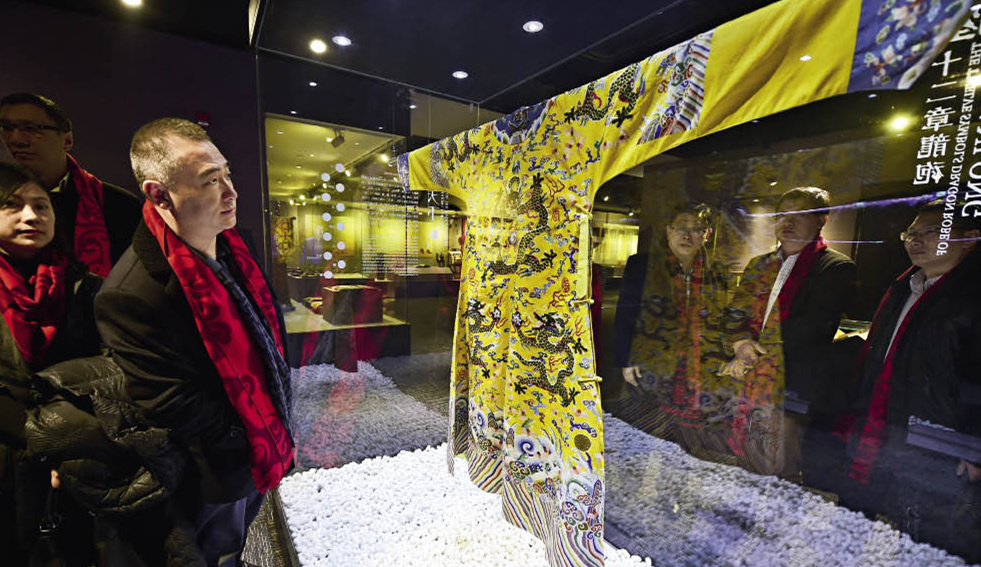The Silk Capital Embraces the World
China Today, September 6, 2016 Adjust font size:
Reaching Out to the World Through the Silk Road
The history of silk making in Hangzhou dates back to a time much earlier than Marco Polo’s report. In the period of the Liangzhu Culture, 4,000 to 5,000 years ago, people in the area had mastered the skills of silkworm breeding and silk making. During the Spring and Autumn Period (770-476 BC), Goujian, king of the Yue State, launched measures to support the development of sericulture in a bid to enrich the state. During the Tang Dynasty (618-907), Hangzhou-made silk was often presented as an imperial tribute. The city grew to become the center of silk manufacturing in the Southern Song Dynasty (1127-1279) as almost every household was engaged in silkworm breeding and silk making. Hangzhou, along with neighboring Jiaxing and Huzhou, is the cradle of sericulture and silk products. Silk fabric, with more than 4,600 years of history, is among one of the archaeological findings unearthed at the Qianshanyang Site in Huzhou.
As an export commodity, silk was transported to the Western Regions by way of the Silk Road in the Han (202 BC-AD 220) and Tang dynasties. Thanks to the rapid progress of foreign trade in the Song (960-1279) and Yuan (1279-1368) dynasties, silk products made in Hangzhou were sold to Southeast Asia and the Arab world. The transmeridional Silk Road and the south-to-north Maritime Silk Road played an important role in bringing silk to the world. These passages have always been of great significance to China’s economy and culture.

A cultural custodian demonstrates traditional silk weaving skills.
According to Lou Yisheng, a professor at Zhejiang University’s History Department, Hangzhou owns unique status and profound significance with regard to the silk roads in respect of its history and geography, as it links the silk routes on both land and sea. China’s Grand Canal connects major cities including Hangzhou in the south, Kaifeng and Luoyang at the center, as well as Chang’an (today’s Xi’an) in the north. Located on the extended route of the Silk Road on land, and on the southeast coast of China, Hangzhou served as a key intersection of the overland and maritime trade routes. Facilitated by its favorable location and silk trade, the city developed into a port of transshipment and an international metropolis.
Today, the Belt and Road Initiative is generating new opportunities for this silk capital. Bao Zhicheng, head of the Institute of Cultural Heritage Study at Zhejiang Academy of Arts, believes that silk represents the gentleness, dignity, thoughtfulness, and affinity that is echoed throughout Chinese culture. Seres, the name China was called by ancient Greeks, refers to a silk-producing country and reveals the cultural influence of silk more than 2,000 years ago. Bao notes that based on the opportunities brought about by its strategy, Hangzhou is expected to fulfill its mission to facilitate silk and Eastern culture globally.

